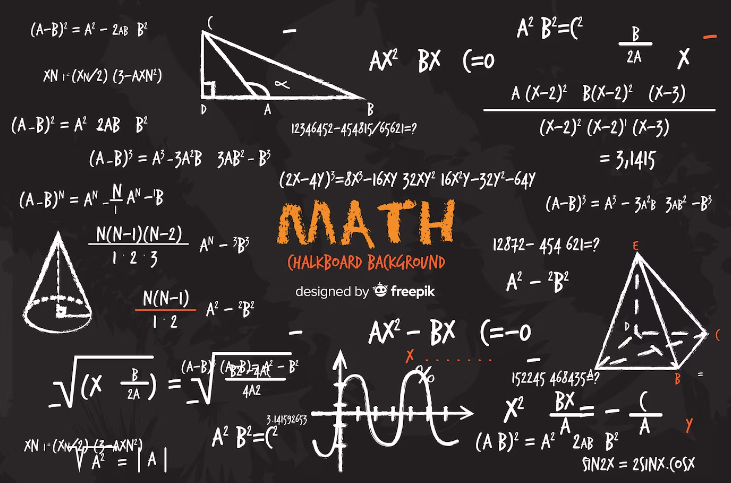Mathematics is a field that has developed and evolved significantly throughout human history:
Ancient Mathematics: The earliest known mathematical developments can be traced back to ancient civilizations such as the Babylonians, Egyptians, and Greeks. They laid the foundation for concepts like arithmetic, geometry, and basic algebra.
Classical Mathematics: The ancient Greeks, particularly mathematicians like Euclid, Pythagoras, and Archimedes, made substantial contributions to geometry and number theory. Euclid’s “Elements” is one of the most influential mathematical texts in history.
Islamic Golden Age: During the Islamic Golden Age (roughly 8th to 13th centuries), scholars in the Islamic world made significant advancements in algebra, trigonometry, and other fields. Al-Khwarizmi, for example, gave us the word “algebra” and wrote extensively on solving linear and quadratic equations.
Renaissance and Enlightenment: The Renaissance and Enlightenment periods in Europe saw a revival of interest in mathematics and the development of calculus by mathematicians like Isaac Newton and Gottfried Wilhelm Leibniz.
19th Century: The 19th century witnessed the formalization of mathematical rigor and the development of abstract algebra, topology, and set theory. Mathematicians like Georg Cantor and Augustin-Louis Cauchy made significant contributions.
20th Century: The 20th century brought about revolutions in mathematics with the development of new fields like group theory, abstract algebra, topology, and mathematical logic. Computers also started playing a significant role in mathematical research and application.
Modern Mathematics: Today, mathematics continues to evolve with the exploration of advanced topics such as mathematical modeling, cryptography, number theory, mathematical physics, and the intersections of mathematics with other sciences and technologies.
Mathematics has also been influenced by cultural, technological, and societal changes over time. It has grown into a vast and diverse field with numerous branches and applications, from pure mathematics to applied fields like engineering, physics, economics, and computer science.
Ancient Mathematics:
- Babylonians: Around 2000 BCE, the Babylonians developed a base-60 numbering system, which is the origin of our 60-second minute and 60-minute hour. They also had methods for solving quadratic equations and working with fractions.
- Egyptians: The ancient Egyptians used a decimal numbering system and were skilled in geometry, especially for practical purposes like land surveying.
- Greeks: Greek mathematicians like Euclid developed the axiomatic method for proving mathematical statements and wrote “Elements,” a comprehensive compilation of geometry that influenced mathematics for centuries.
Classical Mathematics:
- Greek contributions, especially in geometry, laid the groundwork for many fundamental concepts. For instance, Pythagoras’ theorem, Euclidean geometry, and Archimedes’ contributions to geometry and calculus-like ideas.
Islamic Golden Age:
- During this period, scholars translated and built upon Greek and Roman works, leading to significant advancements. Al-Khwarizmi’s “Al-Kitab al-Mukhtasar fi Hisab al-Jabr wal-Muqabala” (The Compendious Book on Calculation by Completion and Balancing) introduced algebraic methods and algebraic equations.
- Trigonometry and algorithms were developed further, with Al-Biruni’s work on trigonometry being influential.
Renaissance and Enlightenment:
- The Renaissance saw a renewed interest in ancient mathematical works and the development of algebraic notation. Mathematicians like François Viète advanced algebraic symbolism, and Descartes introduced the Cartesian coordinate system, connecting algebra and geometry.
- The Enlightenment era brought mathematical rigor, with mathematicians like Euler and Gauss contributing to number theory, analysis, and algebra.
19th Century:
- Abstract algebra started to take shape with the work of mathematicians like Évariste Galois, who introduced group theory to solve polynomial equations.
- Georg Cantor introduced set theory and the concept of different sizes of infinity.
- Non-Euclidean geometries challenged the traditional views of geometry.
20th Century:
- The development of mathematical logic by figures like Bertrand Russell and Kurt Gödel led to groundbreaking results in understanding the foundations of mathematics.
- Computers emerged, enabling numerical simulations, solving complex equations, and automating mathematical processes.
- New branches like topology, functional analysis, and algebraic geometry gained prominence.
Modern Mathematics:
- Fields like chaos theory, fractals, and cryptography emerged as technology advanced.
- Mathematicians explored connections between mathematics and other sciences, leading to interdisciplinary research.
- Theoretical advances continue, including the famous proof of Fermat’s Last Theorem by Andrew Wiles.
Throughout these stages, mathematics evolved due to a combination of cultural exchange, technological advancements, and intellectual curiosity. It transformed from practical tools for measurement and construction to a highly abstract and interconnected field that influences various aspects of our modern world.








